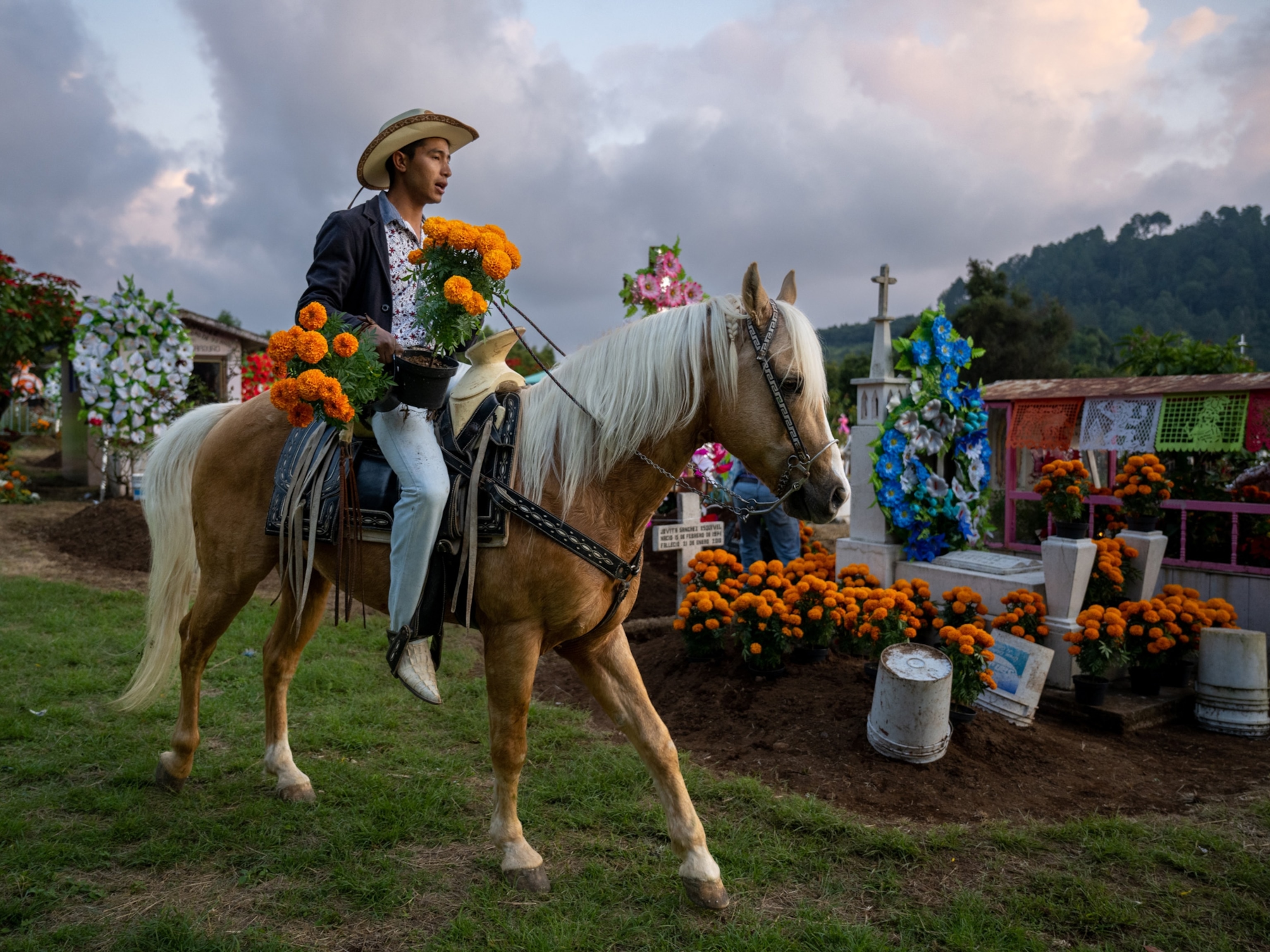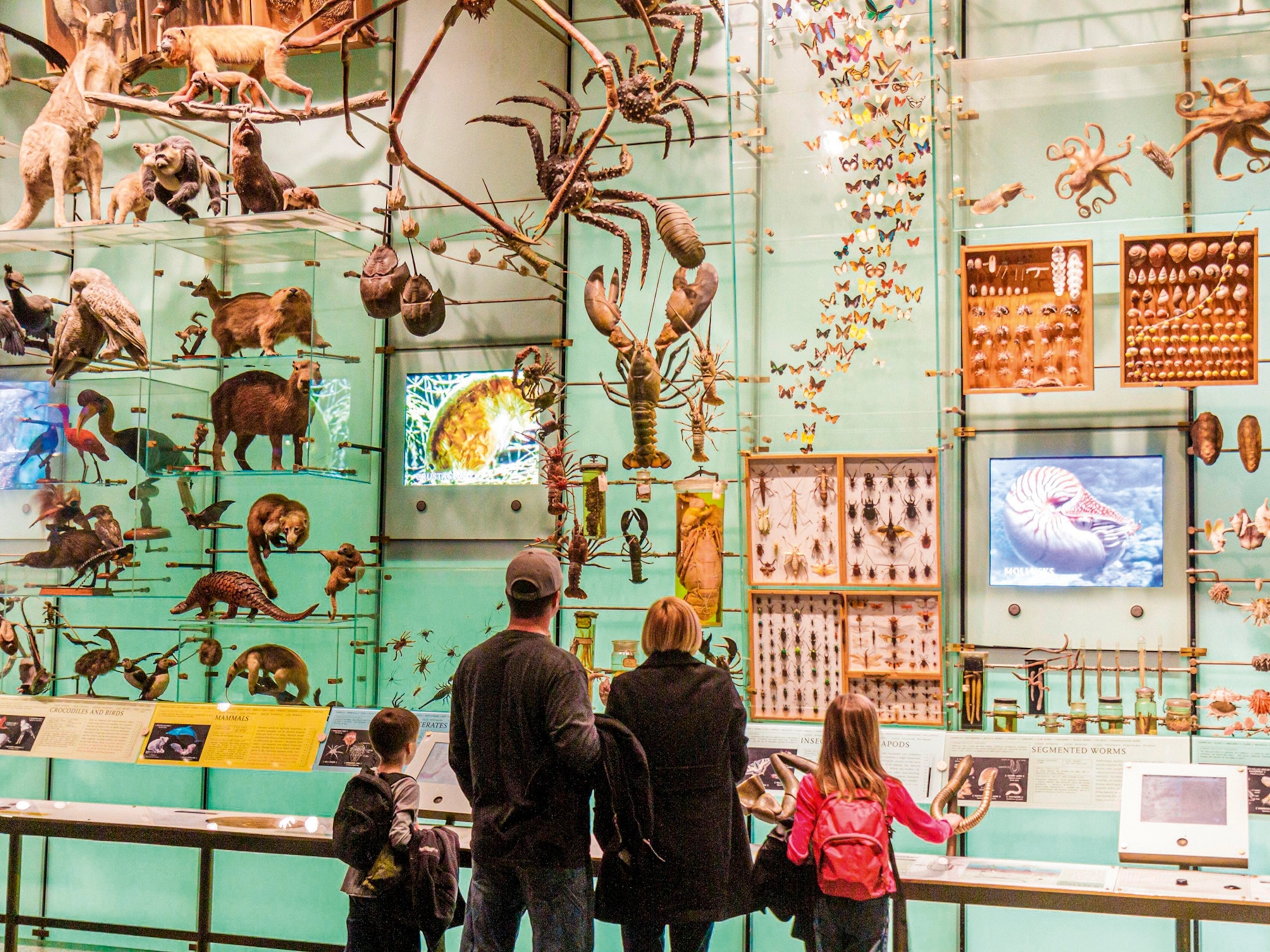
Witness historic Day of the Dead rituals in Naples, Italy
Relatives and strangers alike celebrate the giorno dei morti in these crowded, ancient tombs.
“Two Euros for a bunch! Only two Euros! Look how fresh they are! We have the best flowers here!”
Florists line the outside wall of the 123-acre Poggioreale cemetery, yelling in the local Neapolitan language to gain the attention of potential customers. People slowly shuffle their way through the side entrance, each with a bundle of bright red, white, yellow, or pink flowers, contrasting the otherwise grey cemetery.
Stone buildings—some only as wide as a coffee table, some as large as the apartment buildings in the surrounding residential area—flank the main street through the cemetery. It’s within these stone buildings where some deceased undergo a process that has been occurring in Italy for over 500 years.
Unique burial process
Like inhabitants of other Catholic countries, Italians spend the November 2 All Souls Day placing flowers at their cemeteries and speaking to their deceased relatives in observance of day of the dead, or giorno dei morti.
In Naples, as in other parts of southern Italy, this observance stretches out to about a week and a half of various rituals and customs that mix Christian practices with local traditions, a combination dating back to the development of the early church during the Roman Empire.
When a person dies, they have a traditional Catholic funeral. But after the funeral, the body is placed in a temporary wooden casket and buried in the ground, usually in the basement of these funeral buildings. Five years later, the family returns to the cemetery to identify their relative. After an identification is made, the undertakers—affectionally referred to in Naples as schiattamuorto, which literally translates to “death squishers”—clean the body and wrap it in a white fabric in a type of mummification process. The body is then brought to a family tomb and its final resting place, where living relatives visit every November 2.
As a way to conserve space in dense Naples, family members are placed together in the same tomb. The majority of these tombs, which make up the inside walls of the cemetery’s buildings, hold up to three bodies. The larger ones, usually located closer to the ground, hold up to five.
As people make their way into their family tombs for the giorno dei morti ceremonies, their noses are immediately hit with the strong smell of decaying bodies, or cadaveria.
One man takes a deep breath, removes the bright yellow flowers from their crinkling plastic, and places them in the thin metal cups on either end of the marble tomb. He leans back on a railing, folds his arms and starts quietly mouthing a conversation to the remains of his deceased family.
Living with death
In addition to visiting their own family members, some people pay respects to those without a family. In the Sanitá neighborhood, the Fontanelle cemetery is the scene of one of the city’s half a dozen death cults. Community members have taken it upon themselves to adopt centuries-old unclaimed bodies and give them offerings like money or jewelry as a way to ease their pain and ask for favors.
Relatives of the deceased and tourists alike have the opportunity to enjoy a local treat, torrone dei morti. A nougat-like candy, torrone dei morti is used as an offering to the dead on their journey to the afterlife, and can be found at any pastry store in the city.
Aldo Colucciello, a social anthropologist and scientific coordinator at a cross-cultural association notes that although both the Poggioreale and Fontanelle cemeteries are open and free to the public, visitors should keep in mind the sensitive nature of these places and walk through with humility. The Fontanelle cemetery has become more of a tourist destination in recent years, attracting visitors from around the world. Tours are available in English, French, and Italian.
Colucciello explains how Neapolitans’ openness with death comes from the constant threat of it, in the form of Mt. Vesuvius looming over the city.
“[Naples] can be very dangerous,” he says. “We mustn’t have fear of death, otherwise we’d stay closed in our house, and that’s not possible because we have this kind of weather.” He motions up to a clear blue sky with both hands. “It’s a way to win the fear.”
- National Geographic Expeditions





